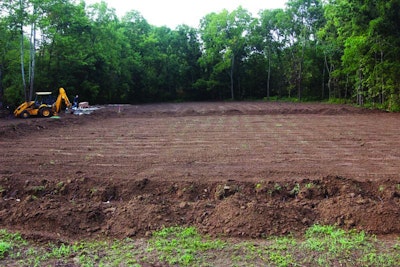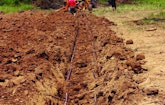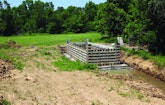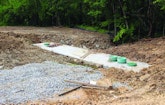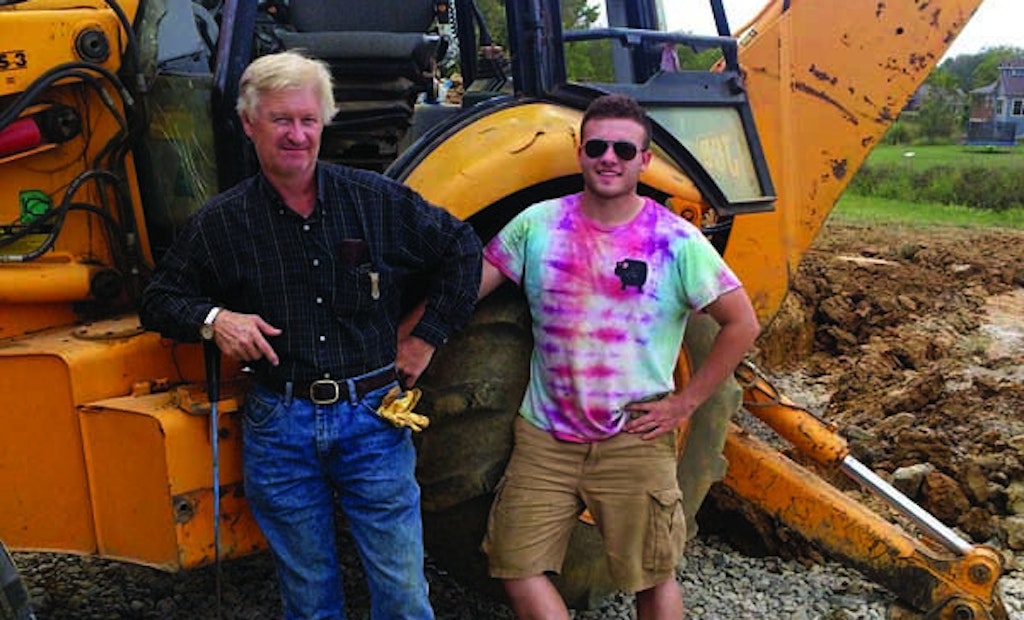
Interested in Systems/ATUs?
Get Systems/ATUs articles, news and videos right in your inbox! Sign up now.
Systems/ATUs + Get AlertsBallardsville lies about 22 miles northeast of Louisville, Kentucky, close enough to be a bedroom community for the major city on the Ohio River. Proximity to Louisville has brought a lot of development to Ballardsville, and the increasing density is demanding more than the usual solutions. In the case of the Ballard Glen subdivision, installer Steve Johnson put in an advanced community wastewater system for two reasons. One was the lack of space for traditional systems and drainfields. The other was owners who are thinking of the future and wanted advanced onsite treatment.
Louisville is home to a large Ford auto plant building the company’s popular F-150 and F-350 pickup trucks and Explorer SUV. There’s a big FedEx operation as well as the national hub for UPS. “Personally, I know 20 or 30 of the aircraft pilots who have recently built new homes in the Oldham County area,” Johnson says. All this corporate activity means new home construction is important to the area and to Johnson’s CSA Excavating Services.
The group of homes Johnson worked on is the second phase of the Ballard Glen development. “They don’t have it all built out yet. When they reach 25 homes we’ll have to increase the size of the absorption field to accommodate the rest of the project. Plans call for about 54 homes.”
This was the second system Johnson did using Quanics technology, and it’s a big one that involved not only a complicated arrangement but unusually large tanks. It involved a lot of fixing, too, because the project had been started by someone else. It was up to Johnson to finish the system — and fix pre-existing mistakes.
The system
Each home discharges wastewater into a 4-inch pipe that leads to a 1,500-gallon concrete septic tank to settle solids and provide primary treatment. Another 4-inch pipe takes wastewater from the tank outflow to a standard 8-inch sewer main.
All the mains converge on a 25,000-gallon concrete recirculation tank poured in place a couple of hundred yards behind the subdivision by a contractor not associated with Johnson. A 96-inch pump vault holding two Quanics 1/2 hp pumps sends water through about 40 feet of Schedule 40 2-inch pipe to a pair of Quanics 5,000 gpd AeroCell advanced treatment units. Water leaving the AeroCell tanks flows through a 4-inch pipe to a diverter that sends 80 percent of the water back to the recirculation tank. The other 20 percent is pumped about 350 feet through a 4-inch line to a 15,000-gallon concrete dosing tank that was also poured in place. A 62-inch pump vault with two Quanics 1/2 hp turbine pumps sends water through a 2-inch pipe to the drip irrigation field.
The system is controlled by a Quanics panel. When the subdivision is fully built out, the panel will operate five treatment pumps, two drip pumps, and a six-zone irrigation controller. The treatment section will consist of five AeroCell units.
The absorption field for the moment consists of 18,000 linear feet of dripline from Geoflow. That will expand to 36,000 linear feet when the subdivision is completely built out. The design from engineer Bobby Vinsand splits the drainfield into three zones and, most importantly, fits within the confined space available, Johnson says.
The work was done with Johnson’s backhoes from JCB and Caterpillar and a Caterpillar skid-steer.
Installation not easy
“Logistically, the installation was a nightmare depending on different times of the year,” he says.
For starters, the previous developer had not finished off the sewer system by some 700 feet of pipe. Johnson put that in. The previous developer also buried his sewer lines too deep, more than 10 feet. To work on them, Johnson and his guys had to dig steps in the earth to prevent cave-ins, and even then the work was difficult. This also meant that taps from the tanks at each home could be as deep as 10 feet. In this part of Kentucky, the frost line on paper is about 16 inches. “We’ve been here for 30 years, and I’ve never seen it freeze that low in the ground. Every year there are only two or three weeks of really bad weather,” Johnson says.
Manholes for the sewer mains were all placed in the middle of streets. “We had to reseal several of those. If we hadn’t, there would have been massive infiltration into the wastewater system every time it rains.”
The dripline was buried at 10 inches, and that provided its own challenge. As someone who doesn’t do dripline often, Johnson first searched for a vibrating plow he could rent. It was a hard thing to find in his part of the world, and rental came at a steep price. “It was going to be like $800 or $900 a week to rent, and it took us about four weeks to put in all that dripline. That’s strong incentive to invent your own tool.”
In the end, he and his workers – grandson Camden Elliott and son Andrew Elliott Johnson – dug trenches with an excavator. He designed and built one dripline tool for his tractor, but couldn’t get enough downward pressure and stopped using it. He says he still wants a better tool. His next design will go on his skid-steer. “If that doesn’t work, I’ll figure out some way to do it because I like making my own tools and equipment.”
Land challenges
The weather and land didn’t help speed the three-month project. During the winter there was rain every three or four days. The site for the treatment system was about 50 feet from a creek. “The whole place down there was a swamp at one time. There’s a huge groundwater problem, and water kept filling up the hole for the big recirculation tank. I don’t know how many times I pumped that hole out.” That was after Johnson’s crew spent 10 days cutting rock with a backhoe hydraulic hammer in order to create the hole.
Alternative systems are common in Johnson’s part of Kentucky. “We’ve probably put in more mound systems than the rest of the people in the state,” he says. In addition, he’s done many LPP and engineered wetlands.
Soils are already so loaded with waste that new subdivisions are not being promoted as they were, and the lots that remain cannot be built on without advanced technology. Whatever is invented next, Johnson says, he and his company will learn about it and adapt to it.
